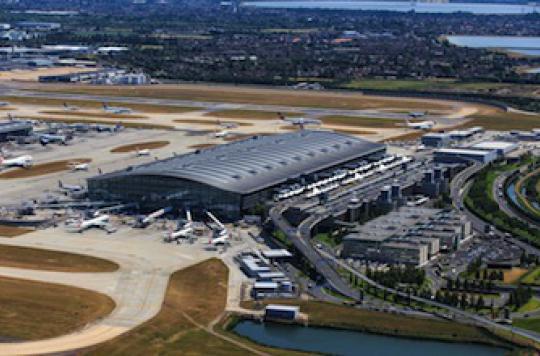The elderly are very sensitive to high decibel levels. And their hearts particularly suffer from the noise of airplanes, as revealed by a BMJ study.

If you live near an airport, this article might ring in your ears. British and American researchers have just discovered that exposure to high levels of aircraft noise is associated with an increased risk of cardiovascular disease. From two unpublished studies, these results are published this Wednesday in the British Medical Journal.
The greater the exposure to noise, the greater the risk
Previous work had already alerted researchers to a supposed link between exposure to aircraft noise and the risk of hypertension, but little research had so far examined the link between these noise nuisances and heart disease. But now, London-based researchers are unveiling new findings, which sound the alarm bells about the risks faced by people living near airports.
The first study by a team of British scientists looked at the 3.6 million people living near London’s Heathrow Airport, one of the busiest in the world.
They compared hospital admissions for heart disease, and death rates from strokes between 2001 and 2005 among these people, compared to people living far from airports.
The researchers then found an increase in risk and death from heart attacks, for the 2% of the population that was exposed to the highest levels of aircraft noise. In other words, the people who lived closest to London’s airport were most at risk.
The elderly remain the most vulnerable to noise
In the second study, this time from the United States, researchers at Harvard School of Health and Boston University analyzed data on more than six million older people (65 years of age or older) who lived nearly 89 US airports in 2009.
Their avowed objective was, again, to determine whether exposure to aircraft noise increased the risk of hospitalization for cardiovascular disease.
As a result, they measured, again, that people living near an airport had a cardiovascular disease hospitalization rate that increased by 3.5% every time they were exposed to 10 decibels more (dB). .
Finally, the data collected also revealed that participants exposed to the highest noise levels (over 55 dB) had the highest risk of hospitalization for cardiovascular disease. In the end, they estimated that 2.3% of these hospitalizations among the elderly living near airports were attributable to aircraft noise!
Airports, however, are not the only places where decibels can peak. This is also the case in nightclubs. The High Council for Public Health published on October 4 new recommendations on noise exposure. The HCSP first of all recalls that the thresholds of danger for the ear depend on the sound level and the duration of exposure. Thus, hearing risks are limited if exposure to 85 dBA lasts less than 8 hours, or 4 hours at 88 dBA, or 2 hours at 91 dBA, or 15 minutes at 100 dBA. And he recommends that, in nightclubs and concert halls, sound levels be displayed continuously, that hearing protection be provided free of charge or that hearing recovery zones be provided with a sound level of less than 85 dBA.
.















